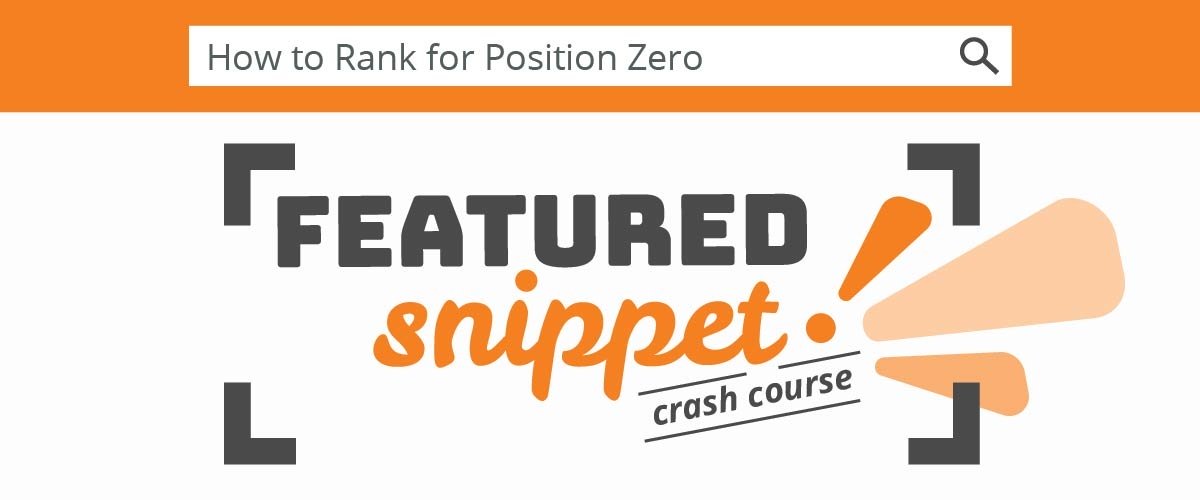The proverbial white whale of SEOs everywhere, the Featured Snippet remains elusive, but not for long! If you haven’t heard about it, you’ve at least caught a glimpse of its beauty as it, every so often, emerges above Google’s SERP. But what is it, and is it worth your time hunting down—and how should you cast out your marketing spears, nets, and the like to reel it in?
You’ve got questions, we’ve got answers.
What is a Featured Snippet?
Sometimes referred to as an Answer Box or Position 0, a Featured Snippet serves to immediately answers a question entered into Google and sits above Google’s search engine results page (SERP).
In other words: that little box that appears on the very top of Google’s search results page, that’s the Featured Snippet! See, you have seen it—even if you didn’t know it.
Types of Featured Snippets:
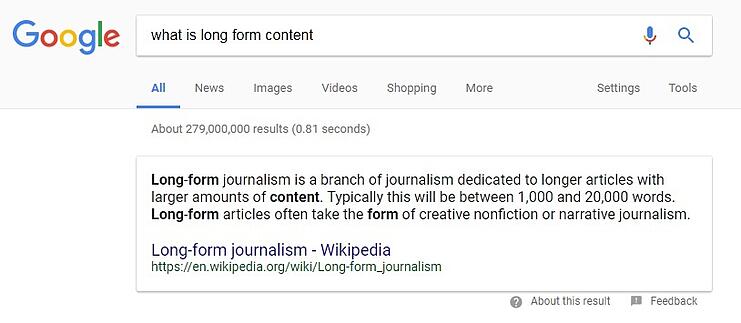
- A paragraph. This is a definitional or explanatory response to the proposed question. In many cases an answer will be accompanied by a relevant image.
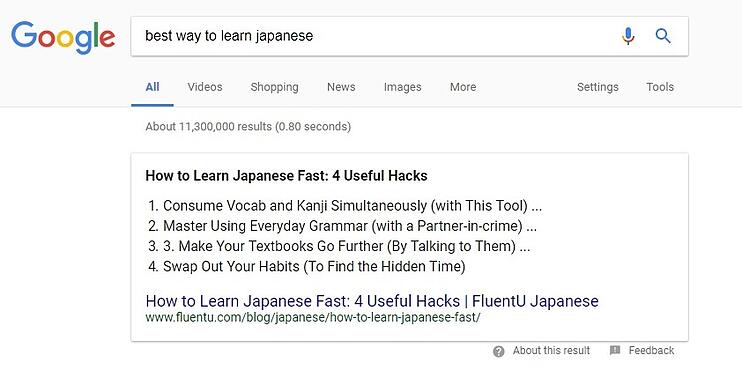
- A list. This is as straightforward as it sounds. You see this with a lot of “how-to” and “best” questions (e.g. how to tie shoes, best way to learn Japanese).
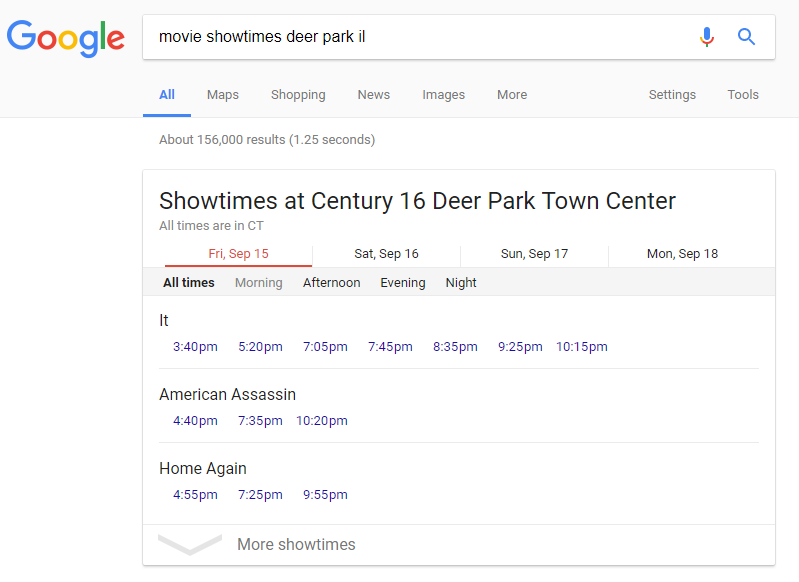
- A Table. Ever search for movie times in a particular city, or how about the score to a baseball game? The top result is more often than not, a table snippet.
How to Rank for Position 0:

Identify a Problem:
Because Featured Snippets are answers to questions, you want to begin by identifying a relevant problem that needs solving. Start broad. Once you identify a topic try tossing it into Google – what comes up? You’ll most likely see a Featured Snippet sitting at Position 0 already. Don’t panic! Instead, pay close attention to “People Also Ask” as it’s an excellent indicator of the questions you should be answering.
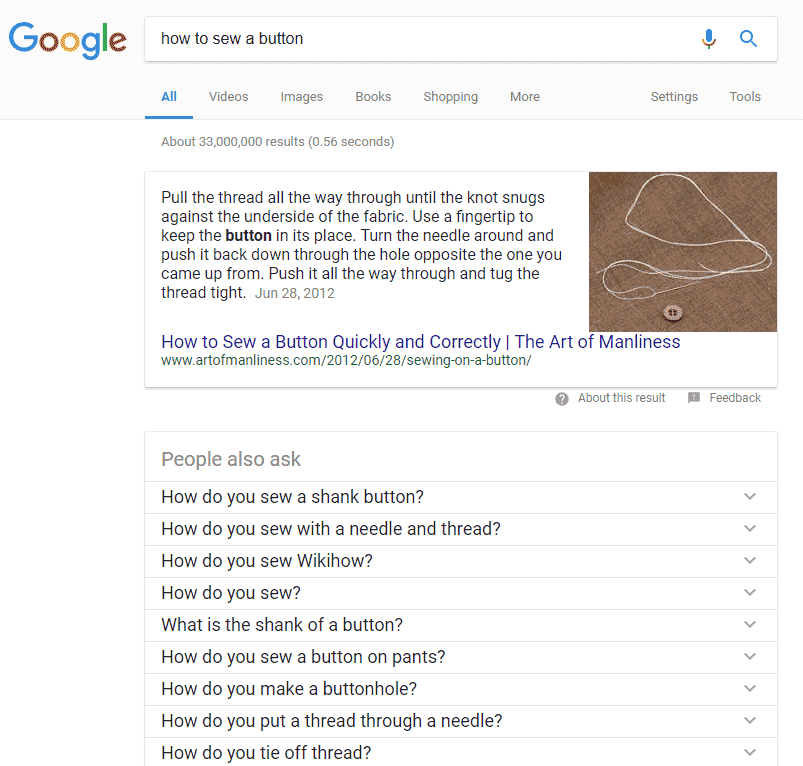
If you’re not satisfied with the “People Also Ask” results, Answer the Public is a handy website that uses easy-to-read graphics to show you what Google users are searching for. Just type in a single, relevant word and the website will generate a collection of queries to choose from.
The more specific the question, the easier it is to rank for. Analyzing the longer-tailed questions that Google users are asking is a great way to hunt for opportunities. Ranking for these questions may be more effective for a couple reasons:
- Less people are answering longer-tailed questions.
- Bigger, well-established companies, brands, and websites such as Wikipedia tend to hold Position 0 for broad or general questions. Going after long-tailed questions is a creative way to keep up against those big brands you just can’t compete with.
The real trick here is to answer the question better than the last person. After you identify a problem it’s time to do some good, old-fashioned keyword research.
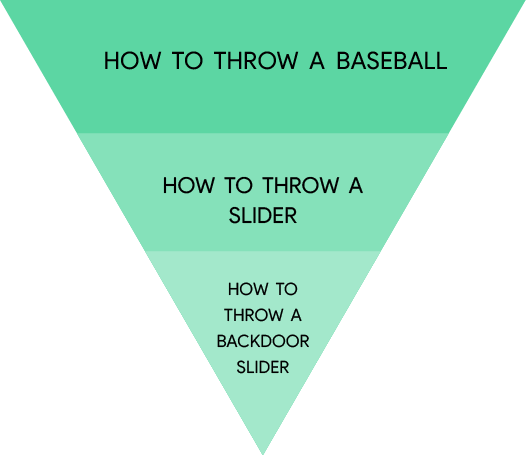
Keyword Research:
We recommend using Google’s Keyword Planner. If you’re unfamiliar with the platform, check out our Keyword Planner tutorial for tips, tricks, and everything else you need to know. Other alternatives include Moz, Ahrefs, and SEMrush. Some portion of your question, if not the whole thing, is going to be the primary keyword. But don’t stop there. Do your best to find related keywords and phrases. At the end of the day, you want Google to be able to clearly understand what your page is about.
Don’t Just Write It, Present It:
You’ve got your keywords, now you’ve got to put them to use. Here are a few things to keep in mind before you get started:
- Stay factual, stay conversational, and give it some personality. Google loves facts — so give Google what it wants. Present your information in a conversational way that is as honest as your facts.
- Don’t repeat. Facts are facts— but don’t just simply copy-and-paste what someone else already said. A good way to avoid this is to write what you know first, then fill in the gaps with research later. Think critically and consider how you can better unpack and re-present the facts or necessary steps in a process.
- Format it. Readability and organization are going to be your new best friends. Google loves a website that’s easy to read, fast, and user-friendly. Your readers appreciate it, too! That’s why, before you even begin writing, we recommend outlining your article. Not only that, but mapping out your article helps you write.
- IMPORTANT: The question you are trying to answer should be a header. It should then be immediately followed by your answer. According to SEMrush, the average length of a Featured Snippet falls between 40 and 50 words.
- IMPORTANT: There has—and will always be—chatter about the proper length of a blog post. As a general rule of thumb: the longer the better. How long should it be? Ay, there’s the rub, and you’re not going to like the answer. It should be however long it takes you to confidently and thoroughly answer the question. More often than not, longer articles are filled with more, useful, information. “Useful” being the important word there. You don’t like filler in your TV shows, Google doesn’t like filler in its index.
- IMPORTANT: Optimize those images! You don’t want giant images slowing your page speed down which is a big no-no. And make sure your images are as engaging as they are supportive. Just throwing any old stock image in there simply won’t do.
- IMPORTANT: The question you are trying to answer should be a header. It should then be immediately followed by your answer. According to SEMrush, the average length of a Featured Snippet falls between 40 and 50 words.
Featured Snippet Myths
“I don’t stand a chance to rank.”
False. Any page has a chance at Position 0—especially if you rank on the first page already. So while you’ll have to get to the first page, once you’re there, the opportunity is up for grabs. Although we touched on this a little earlier, it’s worth reiterating for the sake of clarity: to better your chances, avoid answering broad questions. Rather than write an article about “How to Throw a Baseball,” create a piece of content that answers the search query “How to Throw a Backdoor Slider” instead.
If you already rank on the first page, but aren’t featured, consider how you can make it Featured Snippet friendly. If you’re struggling to even make it that far, follow SEO best practices and make the necessary improvements.
Not all pages will rank well, but answering very specific questions that Google users are asking will significantly tilt the odds in your favor.
“Multiple shorter articles can better increase my chances of ranking.”
False. In theory, the more pages you write the more opportunities you have to rank for. In practice, however, Google will recognize and label brief, quick, and uninformative pages as thin content. This is bad!
A single page of well-written, well-conceived, and well-researched content does more for your site than you might think. Not only does it build brand trustworthiness and keep your readers engaged, it can actually help boost the organic ranking for other, unrelated pages as well by reducing thin content.
In short: more is certainly better, so long as you’re writing more long-form blogs. Plus, if Google likes the content, one of your posts just might become a Featured Snippet! But that doesn’t mean shorter blogs are off limits—just be sure to follow SEO best practices, to keep Google happy.
“Google Home and Amazon Echo voice use Featured Snippets to answer voice searches.”
True! Voice search has added an entirely new element to our digital ecosystem and it’s on the rise. As a new platform, voice search is evolving, so it’s not true to say every response comes frome a Featured Snippet.
Moz did a study where they took 1,000 questions that generated a Featured Snippet on desktop, and ran each question as voice search on Google Home. Out of those 1,000 searches, the questions that generated a paragraph snippet on desktop translated to voice answers on Google Home 87% of the time.
While ranking as a Featured Snippet isn’t a guarentee, your odds of being a voice search response are high. There’s more to come from voice appliances, but in the meantime, it certaintly doesn’t hurt to kill two birds with one stone.
Are Featured Snippets Worth Your Time?
A recent study by Ahrefs reveals that, although Featured Snippets aren’t provoking nearly as many clicks, they are nonetheless generating traffic—but there’s an ugly catch. You aren’t just stealing clicks from your competitors, you’re stealing from yourself. If nothing else the act of claiming Google’s top spot will, in the very least, mitigate your losses. It’s certainly an unfortunate circumstance, but—for better or worse—Featured Snippets are seemingly here to stay. So is Position 0 worth fighting for? Yes. Yes it is. Now that you have a better understanding of how to optimize for it, you have a winning chance.

Logical Position, an Inc. 500 digital agency supporting 5,000+ clients across North America. LP is the proud recipient of Google’s Lead Generation Premier Partner of the Year and Microsoft's Global Channel Partner of the Year 2024! The award-winning agency offers full-service PPC management, SEO, Paid Social, Amazon and Creative Services for businesses large and small. As a Google Premier Partner, Microsoft Elite Partner & Meta Business Partner, LP is in the top 1% of ad spend managed across platforms.
